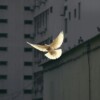Recently, thanks to a collaboration with fellow CCCU school Gordon College, I was able to spend a month in Italy teaching art history to a wonderful group of Christian students. This was, of course, a priceless opportunity for an art historian. Italy abounds in stellar museums and archaeological sites, and over the years, I have been so grateful for the chance to visit many of them – not to mention integrate them into a curriculum.
But in my travels, I have been even more grateful to worship in some of Italy’s many churches. As it happens, I am an almost life-long connoisseur of religious spaces. As a child, I was acutely aware of the aesthetic differences among the churches in my hometown. In my youthful travels, I would make sure to visit the main churches of towns I passed through – even if it just meant looking at them from the outside. This fascination became official when, as a college student, I picked up a “frivolous” art history major in my Junior year. My focus at that time was Early Christian visual culture, centering on the “invention” of the church building as an architectural form.
With its almost two thousand years of ecclesiastical history, Italy hosts innumerable iterations of that thing we call “church,” ranging from the humbly shambolic to the ineffably grand, from the dankly subterranean to the windswept and towered. The landscape is marked everywhere by churches – physical claims on space for the Lord. There are chapels in catacombs, grottoes, and caves; there are cathedrals on plateaus and artificial hills. Last month, I saw a church hollowed directly into the side of a volcanic outcropping. I saw another (one of many) crouched in the ruins of an old pagan temple.

An example of a rock-cut sacred space in Italy. This was once part of a monastic complex. Image links to source.
And as I said – I am particularly fond of worshipping in these spaces when I can. Thus I was delighted, a few weeks ago, to worship in the spectacular church of the Most Holy Name of Jesus in Rome. This sanctuary, constructed as the mother church of the Jesuit order, is better known as simply “The Jesus,” or “Il Gesù.”
Il Gesù, arguably, is among the most bombastic churches in the world. I remember how stunned I was when I first entered it many years ago; its plain facade did not prepare me for the splendor within. It is one of the most golden spaces in the city of Rome – really, anywhere! – and its luster, filtered through ancient dust and candle smoke, swathes one in what feels like a fabric of light.

Interior of Il Gesu. Photo by the author.
Il Gesu is bombastic, yes – but by current standards, it has a very classy kind of “bombast.” There are no laser light shows, no loud music that literally shakes the walls, and no elevated stages swarming with video projections. There is no neon, no hydraulics and no stadium seating. But there IS a lot of gold, silver, brightly colored precious stone, and immersive, hyper-realistic sculptures. And what’s more, there is even the occasional theatrical spotlight! That’s because, since the 1600s, the Gesù has hosted an automated “performance” colloquially dubbed the “macchina barocca,” or “baroque machine.” At 5:30 each evening, a spotlight flips on, trained to a painting of St. Ignatius of Loyola. Thereupon the painting, like an upside-down theater curtain, slowly lowers to disclose a three-dimensional “scene” behind. Gradually, to the strains of classical music, a life-sized silver effigy of St. Ignatius is revealed. He is enjoying his heavenly reward in the company of sculpted angels. Like a saint in an Orthodox icon (the prototypical Christian art form), he seems to float in an otherworldly space full of light.
Aspects of this grand church can make the practical American visitor roll her eyes. There is not only the “macchina barocca” (which, at the time of its origin, must have seemed like a cutting-edge VR experiment), but the absolute lavishness of almost every surface. This extends particularly to the eye-popping ceiling, which is its own kind of cutting-edge VR. From a luminous oval above the church’s main aisle (or nave), angels seem to alternately tumble from, and rise into, heaven. The angels within the painted oval are two-dimensional, but as they tumble out (or in), they increase in three-dimensionality, sometimes interacting with the real architecture of the church. The effect is absolutely magnificent and undeniably impressive; even visitors unmoved by the aesthetic effect are impressed by the baroque artists’ skill. Fittingly, the church’s modern custodians have placed a slanted mirror on the sanctuary floor so that admirers can examine details without craning their necks.

Ceiling of Il Gesù, photo by the Author
The French thinker René Girard is famous for, among other things, anatomizing the human behavior he dubbed “mimetic desire.” According to Girard, “Man is the creature who does not know what to desire, and he turns to others in order to make up his mind. We desire what others desire because we imitate their desires.”1 The Greek word “mimesis” means mirroring or literally copying. It is, of course, related to the word “mime.” In art and literary theory, it is often used to describe representational strategies that aim to copy, as closely as possible, the actual lineaments of some original. Accordingly, classical Greek sculptures are relatively mimetic, while the avant-garde Cubism of someone like Picasso leaves “ham-handed” mimesis behind.
Of course Girard, who was also a literary critic, discussed mimesis in terms of human behavior. Without conscious thought, without careful reasoning, human beings are driven to behaviorally emulate what other people are doing. We are hardwired to chase after what everyone else chases. Too often, when we see others’ desiring behaviors, we are unthinkingly moved to copy them. This tendency to mold ourselves on others makes us like lemmings, in a way. But it also makes us something like the Persons of the Triune God.
For God is always beholding Himself and emulating Himself, in a dance of perfect admiration, total agreement, and experiential union. In God, “mimetic desire” is productive, healthy, and complete; Father and Son see and desire each other in an eternal mirroring of perfect mutuality. When God became incarnate in Jesus, He extended this potential for healthy mimetic desire to everyone, accompanied by the Holy Spirit – if only our faces can be turned to the right exemplar, the right Lover, whose powerful desires are properly aligned. “No one has seen the Father except the one who is from God; only he has seen the Father” (John 6:46, NIV). The only man with right desire was Jesus, and it is He whom we must copy. His perpetual longing, his upward spiritual gaze toward the Father, sets in motion new waves of mimetic desire among us fallen humans, now directed toward the authentic Source of all that is Good, Beautiful, and True.
___________________________________________________
Il Gesù, despite what I have called its “bombast,” is a space of virtuously aligned “mimetic desire.” It is a space where longing hearts can enter and surrender to upward movements – movements that galvanize mimetic echoes in a heavenly spiral. The glitter and glow of this rich space is consecrated to the Lord, and it points to Him by leading the eye toward its many altars. Even the “macchina barocca” aims to stir mimetic desire through St. Ignatius’s outward gesture and upward glance. For in the end, this baroque spectacle is not really about Ignatius but about the fourth wall he seems to break as his left hand reaches to the church’s ceiling. We are not called to contemplate St. Ignatius, but to emulate him, echoing his posture.
And thus we come to the ceiling itself. For the luminous panel above the nave of the church, out of which angels seem to tumble, is titled The Triumph of the Name of Jesus. And near its center, wrapped in almost blinding light, are the letters IHS, a contraction of the Greek spelling of “Jesus,” which in Latin is also an acronym for “Iesus Hominum Salvator” (Jesus Savior of Humankind). It is toward this Name, and the heaven in which it dwells, that Ignatius gestures. It is toward this Name that angels rise and return. It is toward this Name that the very columns of the church itself vertically reach. And if we allow ourselves to “mime” all these movements, it is toward this Name that we incline, as well, in a cleansing and straightening moment of reverence and surrender.
Churches like Il Gesù have at times been dismissed as empty displays of power and wealth. The rational mind dwells on calculations of expense, on the communicative inefficiency of such elaborateness, on a visual complexity that seems mathematically inelegant, or on cultural specificity that seems alienating. But when viewed from the irrational disposition of “mimetic desire,” the architects’ choices all make sense.
Outside on the Roman street there was (and still is) so much to stir mimetic desire. Lavish shops, taverns with rich food, the grand palaces of the aristocracy, the banners of civic pride, and amidst it all, bustling tourists and well-dressed Romans gawking and spending money, sparking feelings of FOMO as they lurch down the sidewalk in hordes or disappear through mysterious doorways.
But inside il Gesù, the whole, desirable world of sense is pulled upward: sight, sound, texture, scent, and most of all, the longing faces and reaching arms of beautiful people – even if they are just sculptures.
Come see what I see, says St. Ignatius. Come reach toward what I am trying to touch. And together, we can reach eternally and never stop, for our desire, and the One we desire, is infinite. And His Name will be honored and glorified, by all the saints and angels, in a tempest of fire and song, forever and ever Amen.


























I love this reminder of how and why we long for goodness, truth, and beauty in the arts. My field is literary theology. I read with interest your comments on mimetic desire and Girard. Thank you. –EG